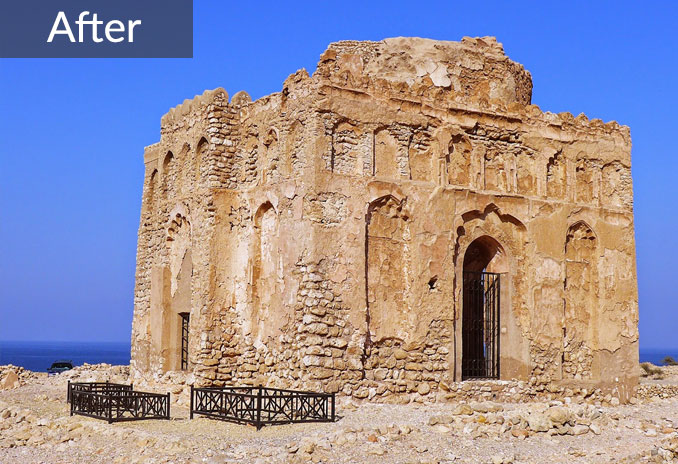Qalhat once served as an important step in the wider Indian Ocean trade network. In the 14th and 15th centuries, it had great strategic significance in the Kingdom of Hormuz and was Oman’s first capital city.
Today it is difficult to picture the great city of Qalhat as all the houses have gone and the harbor is filled with sand and stones.
Some believe the King of Hormuz, Bahauddin Ayez, built the tomb in the 13th century in honor of his wife Bibi Maryam. Others say it is the site of a mosque Lady Maryam built herself or is simply her final resting place. In its time, it must have been an impressive building. The shrine measures almost 30m long and 25m deep, with a basement or underground corridor beneath the shrine.
The ancient city of Qalhat was affected by two terrible events. First, an earthquake destroyed many of the city’s fine buildings at the end of the 14th century.
Then in 1507, the Portuguese arrived in Oman and ransacked Quriyat and Muscat.
The following year they attacked Qalhat, killing many of the local population and burning all the ships and buildings there.
They also burned the beautiful mosque or tomb of Bibi Maryam. Qalhat was completely devastated and the survivors moved away from the city


Most archaeologists research in the tomb to get more and accurate information .
Thank you